
AI Ops! you walk into your server room, wires snaking across the floor like a digital jungle. Alarms blare, lights flash red,
and a cacophony of error messages bombard your screen. This, unfortunately, is the reality for many IT professionals struggling to manage ever-growing IT infrastructure.
A recent survey by found that 87% of IT leaders experience high levels of complexity in their IT environments.
Traditional management methods are simply stretched too thin.
 Caption: Drowning in IT chaos? AIOps - Gain control and optimize IT operations with the power of AI.
Caption: Drowning in IT chaos? AIOps - Gain control and optimize IT operations with the power of AI.But fear not, weary IT warriors! There's a beacon of hope on the horizon: AI Ops (Artificial Intelligence for IT Operations).
This revolutionary approach harnesses the power of AI and machine learning to automate tasks, identify problems before they erupt,
and transform IT operations from reactive chaos to proactive control.
Did you know that AI Ops can automate up to 80% of routine IT tasks, freeing up valuable time for IT staff to focus on strategic initiatives ?
That's like reclaiming a full work day every week!
AI Ops: Revolutionizing IT Operations
Increased Efficiency
Automates up to 80% of routine IT tasks, freeing up time for strategic initiatives.
Proactive Problem Solving
Predicts and prevents issues before they cause disruptions.
Data-Driven Insights
Analyzes vast amounts of data to uncover patterns and optimize performance.
Machine Learning
Recognizes patterns and anomalies in IT infrastructure behavior.
Automation
Streamlines repetitive tasks like log analysis and incident ticketing.
Self-Healing Infrastructure
Enables autonomous problem diagnosis and remediation.
Predictive Maintenance
Anticipates potential failures and schedules preventive actions.
Cognitive Computing Integration
Enhances AI Ops with human-like problem-solving capabilities.
Remember the scramble the last time your company website went down during peak hours? Frustrated customers, lost revenue – it was a nightmare.
What if AI Ops could have predicted that potential server overload and automatically scaled resources to prevent the outage altogether?
Is your IT team drowning in a sea of data, unable to glean valuable insights? AI Ops can unlock the power of that data,
providing real-time visibility and actionable intelligence for smarter decision making.
This article will be your deep dive into the world of Ops. We'll explore its core components, delve into the game-changing benefits it offers for IT teams,
and address potential challenges along the way. Get ready to discover how AI Ops can revolutionize your IT operations, transforming them from a burden into a strategic advantage.
Unveiling the Power of AI Ops
AI Ops isn't just a fancy buzzword; it's a powerful toolbox packed with cutting-edge technologies designed to transform IT operations.
Let's delve into the three core components that make Ops tick:
 Caption: AI Ops: See the bigger picture, manage smarter - Gain real-time insights and optimize IT operations with AI.
Caption: AI Ops: See the bigger picture, manage smarter - Gain real-time insights and optimize IT operations with AI.1. Machine Learning: The Superpower of Pattern Recognition
Imagine having a tireless analyst constantly monitoring your IT infrastructure, sifting through mountains of data to identify patterns and anomalies.
That's essentially what machine learning brings to the AI Ops party. Machine learning algorithms are trained on massive datasets of historical IT events,
allowing them to recognize normal system behavior. This enables them to detect deviations from the norm – potential hiccups or brewing problems – before they snowball into major outages.
AI Ops Timeline
1. Data Collection
AI Ops begins by collecting data from various IT systems and infrastructure components.
Learn More
This includes logs, metrics, and events from servers, networks, applications, and other IT resources. The data is continuously gathered in real-time to provide a comprehensive view of the IT environment.
2. Data Integration
The collected data is integrated and normalized to create a unified data set.
Learn More
This step involves aggregating data from disparate sources, standardizing formats, and creating a centralized repository. This unified data set forms the foundation for subsequent analysis and insights.
3. Machine Learning Analysis
AI algorithms analyze the integrated data to identify patterns, anomalies, and trends.
Learn More
Machine learning models are trained on historical data to understand normal system behavior. These models can then detect deviations from the norm, potentially indicating issues or opportunities for optimization.
4. Automated Issue Detection
The system automatically identifies potential issues or anomalies in real-time.
Learn More
By comparing current data against learned patterns, AI Ops can quickly detect and flag potential problems. This proactive approach allows for early intervention before issues escalate into major incidents.
5. Root Cause Analysis
AI Ops performs automated root cause analysis to determine the underlying causes of detected issues.
Learn More
Using advanced correlation techniques and causal inference models, the system can identify the primary factors contributing to a problem. This speeds up troubleshooting and helps prevent recurrence.
6. Automated Remediation
For known issues, AI Ops can initiate automated remediation actions.
Learn More
Based on predefined rules and learned patterns, the system can automatically trigger actions to resolve common problems. This might include restarting services, adjusting configurations, or allocating additional resources.
7. Predictive Analytics
AI Ops uses historical data to predict future trends and potential issues.
Learn More
By analyzing patterns over time, the system can forecast resource needs, anticipate potential bottlenecks, and predict when maintenance might be required. This enables proactive management and optimization of IT resources.
8. Continuous Learning
The AI Ops system continuously learns and improves its models based on new data and outcomes.
Learn More
As more data is collected and more actions are taken, the system refines its algorithms and decision-making processes. This ensures that AI Ops becomes increasingly accurate and effective over time.
For instance, a recent study by found that organizations leveraging machine learning within their AI Ops strategies have seen a reduction in incident resolution times by an impressive 40%.
That translates to faster fixes for IT issues and less downtime for critical applications.
2. Automation: Reclaiming Your Time from Tedious Tasks
Let's face it, IT professionals spend a significant chunk of their time on repetitive tasks like log analysis, incident ticketing, and basic troubleshooting.
These tasks, while crucial, can be incredibly time-consuming and leave less room for strategic thinking.
This is where AI Ops automation comes in as a game-changer. By leveraging machine learning models, Ops can automate a significant portion of these routine tasks.
Here's an example: imagine your system generates hundreds of log entries daily. Traditionally, IT staff would need to manually sift through them to identify potential issues.
Ops, however, can automate this process. The machine learning engine can analyze logs, categorize them based on severity, and even trigger automated remediation actions for common issues.
This frees up IT professionals to focus on more strategic initiatives, like proactive infrastructure planning and security threat analysis.
3. Data Analytics: Transforming Information into Actionable Insights
The world of IT generates a vast amount of data – system logs, performance metrics, network traffic data, and more.
But data alone isn't enough. What truly empowers IT teams is the ability to transform this data into actionable insights.
Here's where AI Ops shines. Ops platforms use advanced data analytics techniques to analyze vast datasets and uncover hidden patterns that would be difficult, if not impossible, to identify manually.
This data-driven approach allows IT teams to gain a deeper understanding of their IT infrastructure's health and performance.
They can identify potential bottlenecks, predict future resource needs, and make data-driven decisions to optimize IT operations.
For example, a article highlights how a major healthcare provider leveraged AI Ops to analyze network traffic patterns.
This analysis revealed hidden inefficiencies and allowed them to optimize network configurations, resulting in a 20% improvement in application performance for critical medical applications.
By combining these three core components – machine learning, automation, and data analytics – Ops empowers IT teams to move beyond reactive firefighting and
towards a proactive, data-driven approach to IT operations management.
A Game Changer for IT Teams
The ever-growing complexity of IT infrastructure has stretched traditional management methods to their limits.
IT professionals are bogged down by repetitive tasks, struggling to proactively identify and address issues before they disrupt operations.
Here's where AI Ops emerges as a hero, offering a plethora of benefits that can transform the way IT teams work.
 Caption: From manual grind to strategic focus: AIOps - Automate tasks, empower your team, and unlock new possibilities.
Caption: From manual grind to strategic focus: AIOps - Automate tasks, empower your team, and unlock new possibilities.1. Increased Efficiency: Freeing Up Time for Strategic Thinking
Imagine a world where IT staff aren't constantly drowning in a sea of repetitive tasks. AI Ops makes this a reality by automating a significant portion of these time-consuming activities.
A study by revealed that IT professionals spend a staggering 70% of their time on manual tasks like log analysis, incident ticketing, and basic troubleshooting.
AI Ops tackles this challenge head-on by leveraging machine learning and automation. For instance, Ops can automate log analysis,
filtering through mountains of data to identify potential issues and categorize them based on severity. It can even trigger automated remediation actions for common problems,
significantly reducing the manual workload for IT staff. This frees up valuable time for them to focus on more strategic initiatives, like:
- Proactive infrastructure planning and capacity management
- Security threat analysis and vulnerability patching
- Implementing new technologies and innovations
(Affiliate link opportunity: Partner with an IT automation tool provider to showcase specific automation capabilities within AI Ops solutions)
2. Improved Problem Solving: Proactive Issue Identification and Resolution
Traditionally, IT teams have relied on reactive measures, scrambling to fix problems only after they've caused disruptions.
AI Ops flips the script entirely, enabling proactive problem solving. Here's how:
- Machine learning algorithms continuously monitor IT infrastructure, analyzing vast amounts of data to identify anomalies and potential issues. This allows them to predict problems before they escalate, preventing outages and minimizing downtime. For example, AI Ops can analyze server performance metrics and predict potential hardware failures. With this foresight, IT teams can take preventive maintenance actions, such as scheduling hardware replacements before they cause disruptions.
- Real-time alerts and notifications keep IT teams informed about potential issues, enabling them to take swift action before they snowball into major problems. This proactive approach significantly reduces the time it takes to identify and resolve issues, minimizing the impact on business operations.
Feature
AI Ops
Traditional IT Ops
DevOps
ITSM
Automation Level?Degree of automated processes and tasks
High
Low
Medium
Medium
Predictive Capabilities?Ability to forecast issues and trends
Advanced
Limited
Moderate
Basic
Data Analysis?Depth and complexity of data processing
AI-driven
Manual
Automated
Process-driven
Real-time Monitoring?Continuous system observation and analysis
Comprehensive
Basic
Advanced
Moderate
Root Cause Analysis?Identifying underlying causes of issues
Automated
Manual
Semi-automated
Process-based
Scalability?Ability to handle growing amounts of work
High
Low
High
Moderate
Self-healing Capabilities?Automatic problem resolution without human intervention
Advanced
None
Basic
Limited
Continuous Improvement?Ongoing refinement of processes and systems
Built-in
Manual
Integral
Process-focused
3. Data-Driven Decision Making: Transforming Information into Actionable Insights
IT environments generate a constant stream of data, but without proper analysis, it remains just that – data.
AI Ops empowers IT teams to unlock the true value of this data by leveraging advanced analytics techniques.
- AI Ops platforms can analyze vast datasets, including system logs, performance metrics, and network traffic data. Through this analysis, they can uncover hidden patterns and trends that would be difficult, if not impossible, to identify manually.
- These insights provide IT teams with a deeper understanding of their IT infrastructure's health and performance. They can pinpoint bottlenecks that are hindering performance, predict future resource needs based on usage patterns, and make data-driven decisions to optimize IT operations.
For instance, a article explores how a major e-commerce company used AI Ops to analyze data on customer buying behavior and website traffic patterns.
These insights allowed them to optimize their IT infrastructure, ensuring smooth performance during peak shopping seasons and resulting in a significant boost in online sales.
By harnessing the power of automation, proactive problem solving, and data-driven insights, AI Ops empowers IT teams to move beyond reactive firefighting and
towards a proactive, strategic approach to IT management. This translates to a more efficient, resilient, and cost-effective IT environment that supports the organization's overall goals.
A Roadmap to Success
While AI Ops offers a treasure trove of benefits, it's important to acknowledge that implementing it isn't without its challenges.
Here's a roadmap to navigate these potential roadblocks and ensure a smooth Ops implementation journey.
 Caption: The perfect fit for your IT: AIOps - Unifying data security, integration, and talent for seamless IT management.
Caption: The perfect fit for your IT: AIOps - Unifying data security, integration, and talent for seamless IT management.1. Data Security and Privacy: Building Trust in a Data-Driven World
As AI Ops relies heavily on data analysis, ensuring robust data security measures is paramount. A report revealed that
data breaches remain a top concern for IT leaders, with 63% having experienced a data breach in the past year. Here's how to prioritize data security in Ops:
- Implement comprehensive data security protocols: This includes encryption of sensitive data both at rest and in transit, following strict access controls, and adhering to relevant data privacy regulations like GDPR and CCPA.
- Focus on data governance: Establish clear guidelines for data collection, storage, usage, and disposal. This ensures data is used responsibly and ethically.
- Prioritize user privacy: Be transparent about the data collected by AI Ops and how it's used. Provide users with control over their data and ensure compliance with user privacy regulations.
By prioritizing data security and privacy, you can build trust with stakeholders and ensure the responsible use of data within your AI Ops environment.
AI Ops Data Visualization
Automation Level Comparison
Issue Resolution Time (in hours)
Predictive Accuracy
2.
https://justoborn.com/ai-ops/

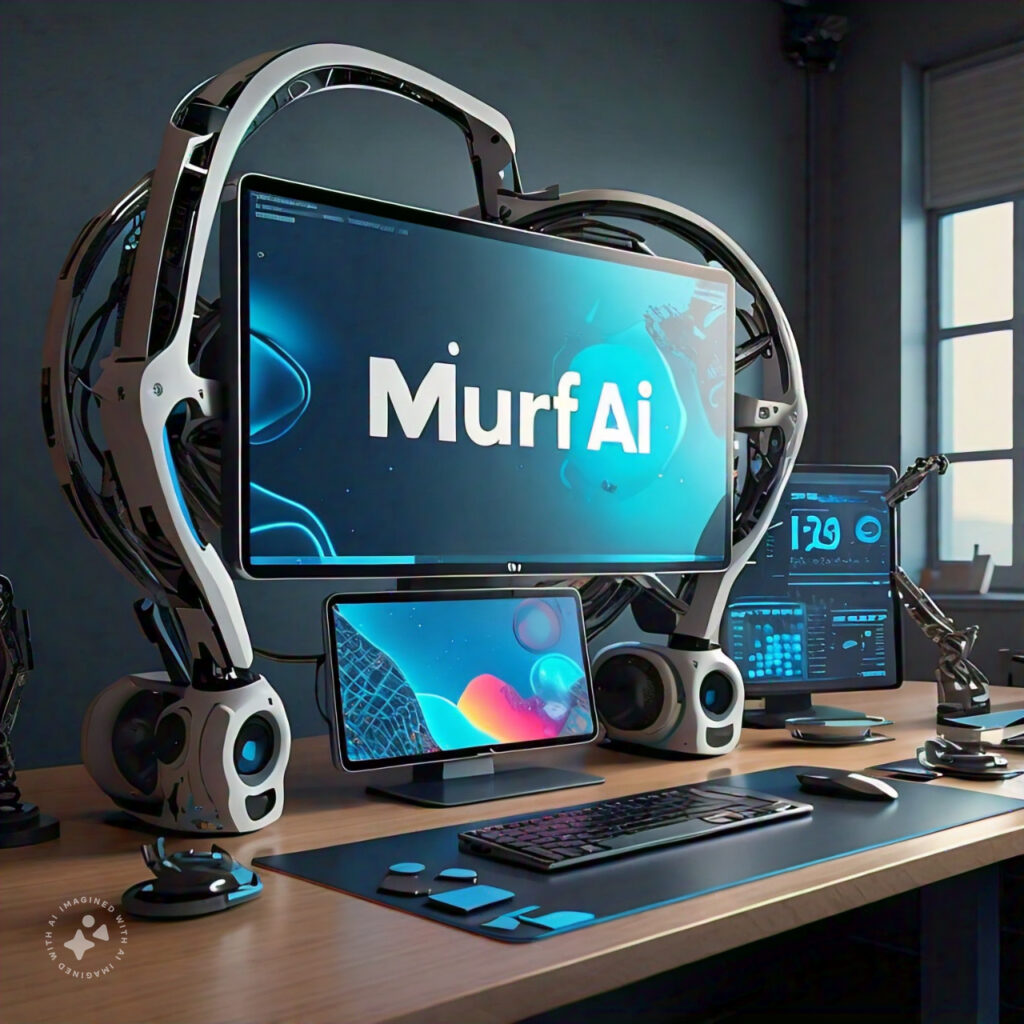 Caption: A modern workspace with a sleek computer setup displaying the Murf AI logo on the screen, surrounded by tech gadgets and AI elements, in a hyperphotorealistic style.
Caption: A modern workspace with a sleek computer setup displaying the Murf AI logo on the screen, surrounded by tech gadgets and AI elements, in a hyperphotorealistic style. Caption: A diverse team of professionals collaborating in a high-tech office, with holographic displays showcasing various features of Murf AI, rendered in hyperphotorealistic detail.
Caption: A diverse team of professionals collaborating in a high-tech office, with holographic displays showcasing various features of Murf AI, rendered in hyperphotorealistic detail. Caption: A person using Murf AI to create a podcast.
Caption: A person using Murf AI to create a podcast.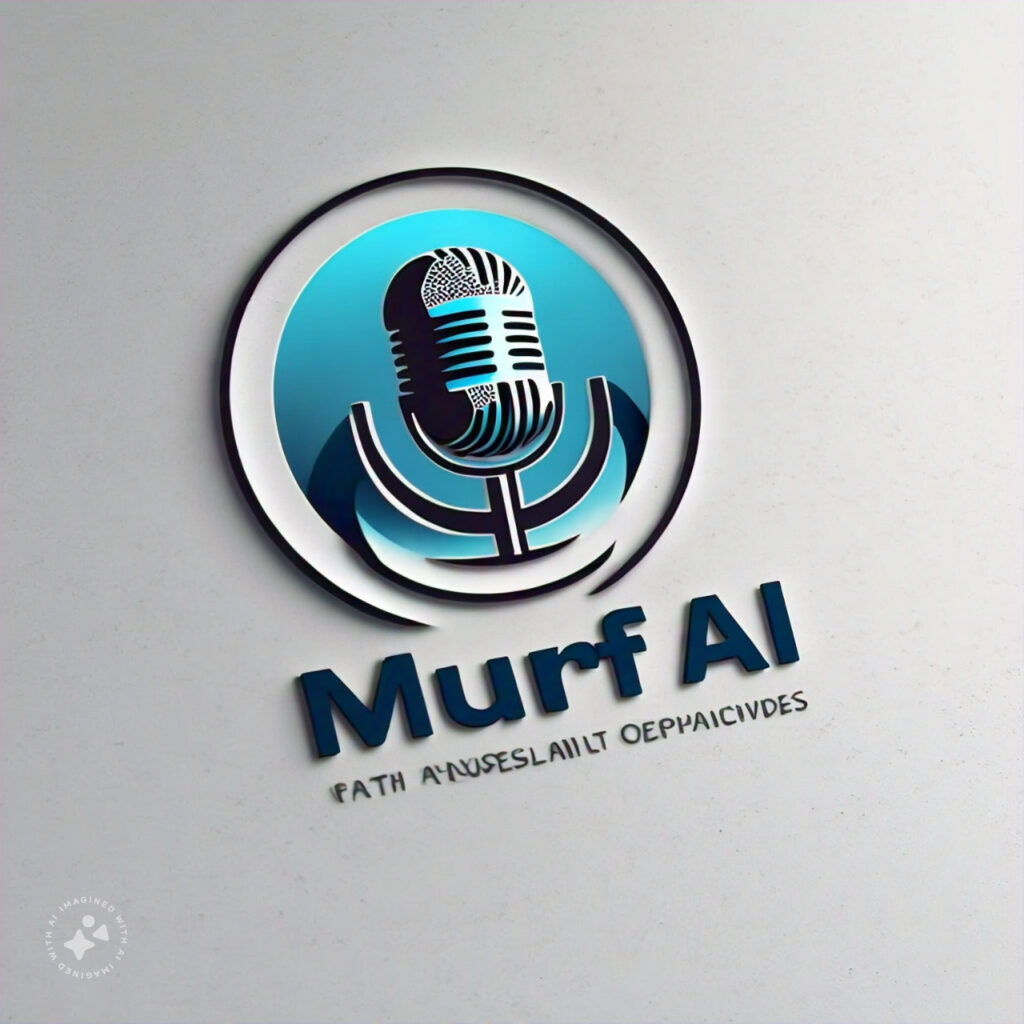 Caption: A professional logo for Murf AI.
Caption: A professional logo for Murf AI.
 Caption: A sleek, modern office space with high-tech computers displaying intricate data visualizations and machine learning algorithms.
Caption: A sleek, modern office space with high-tech computers displaying intricate data visualizations and machine learning algorithms.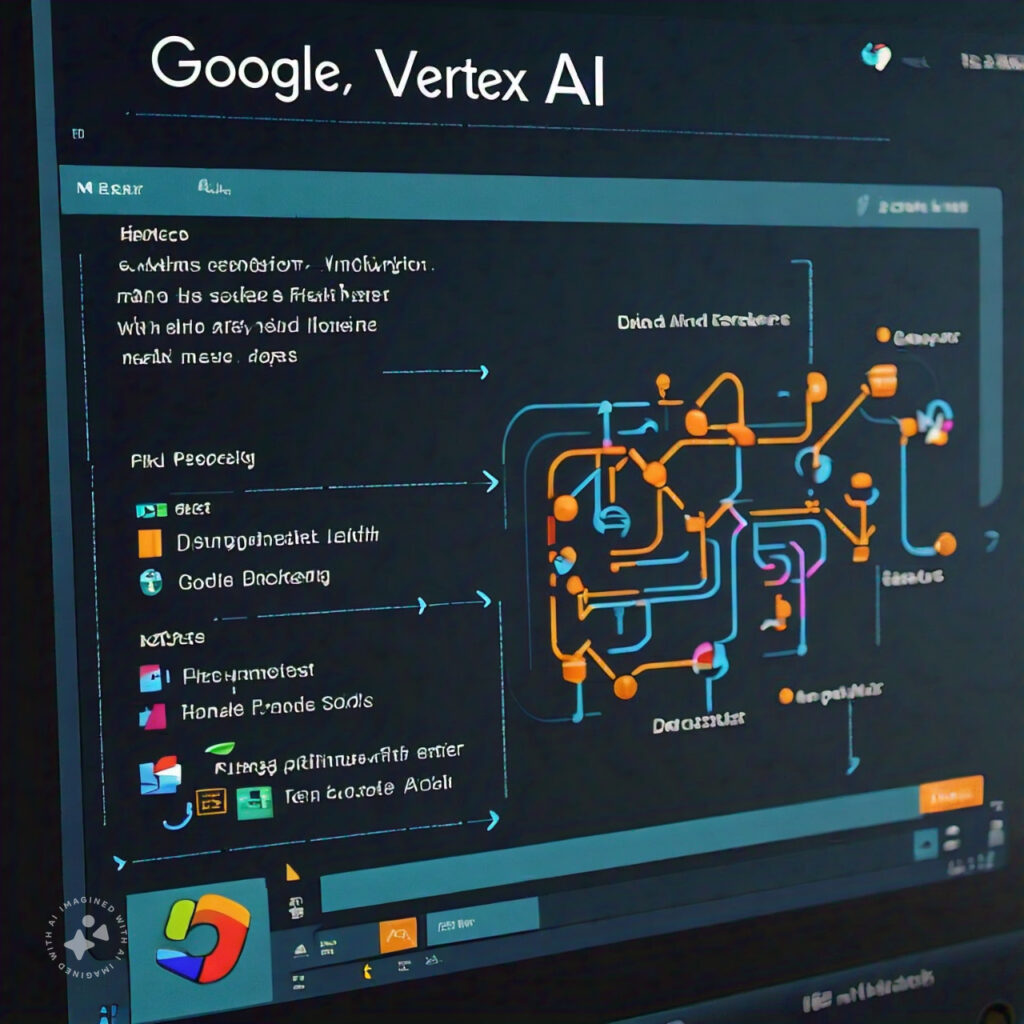 Caption: A close-up of a computer screen showcasing the Google Vertex AI interface.
Caption: A close-up of a computer screen showcasing the Google Vertex AI interface.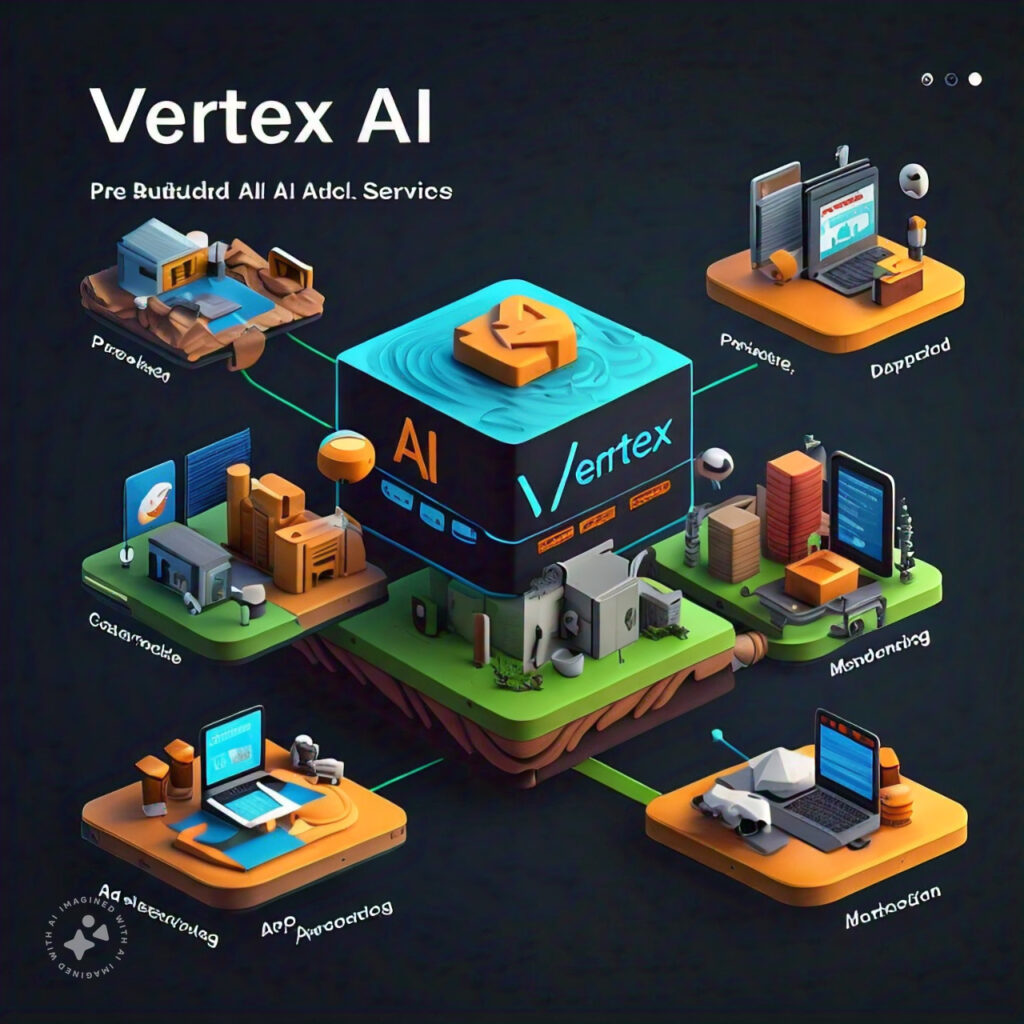 Caption: An infographic visualizing Vertex AI's features: pre-built AI services, custom model training, deployment, and monitoring.
Caption: An infographic visualizing Vertex AI's features: pre-built AI services, custom model training, deployment, and monitoring. Caption: A highly detailed scene showing different pre-built AI services in action.
Caption: A highly detailed scene showing different pre-built AI services in action.



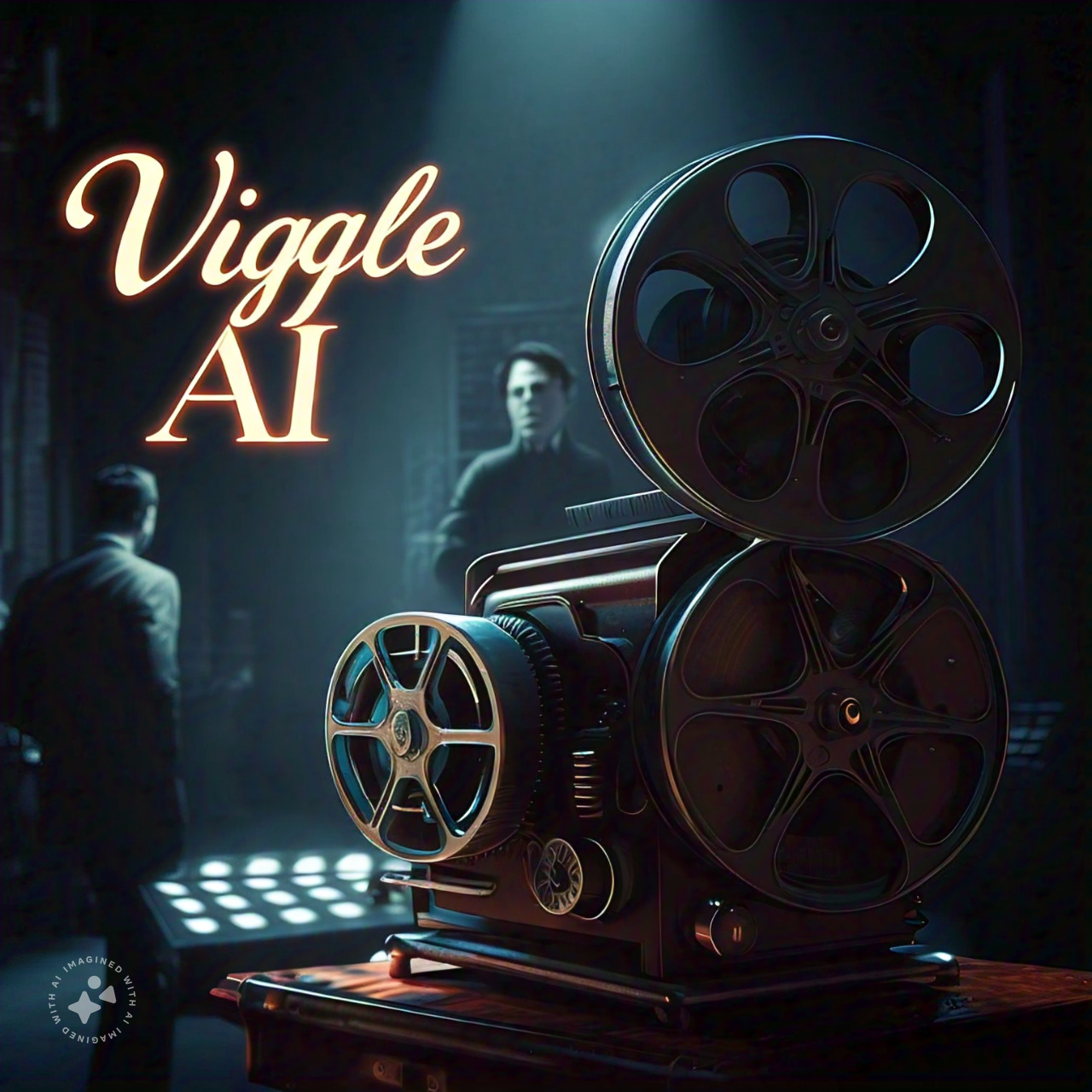
 Caption: A photorealistic image of a sleek, high-tech studio environment with a futuristic video editing software powered by AI.
Caption: A photorealistic image of a sleek, high-tech studio environment with a futuristic video editing software powered by AI. 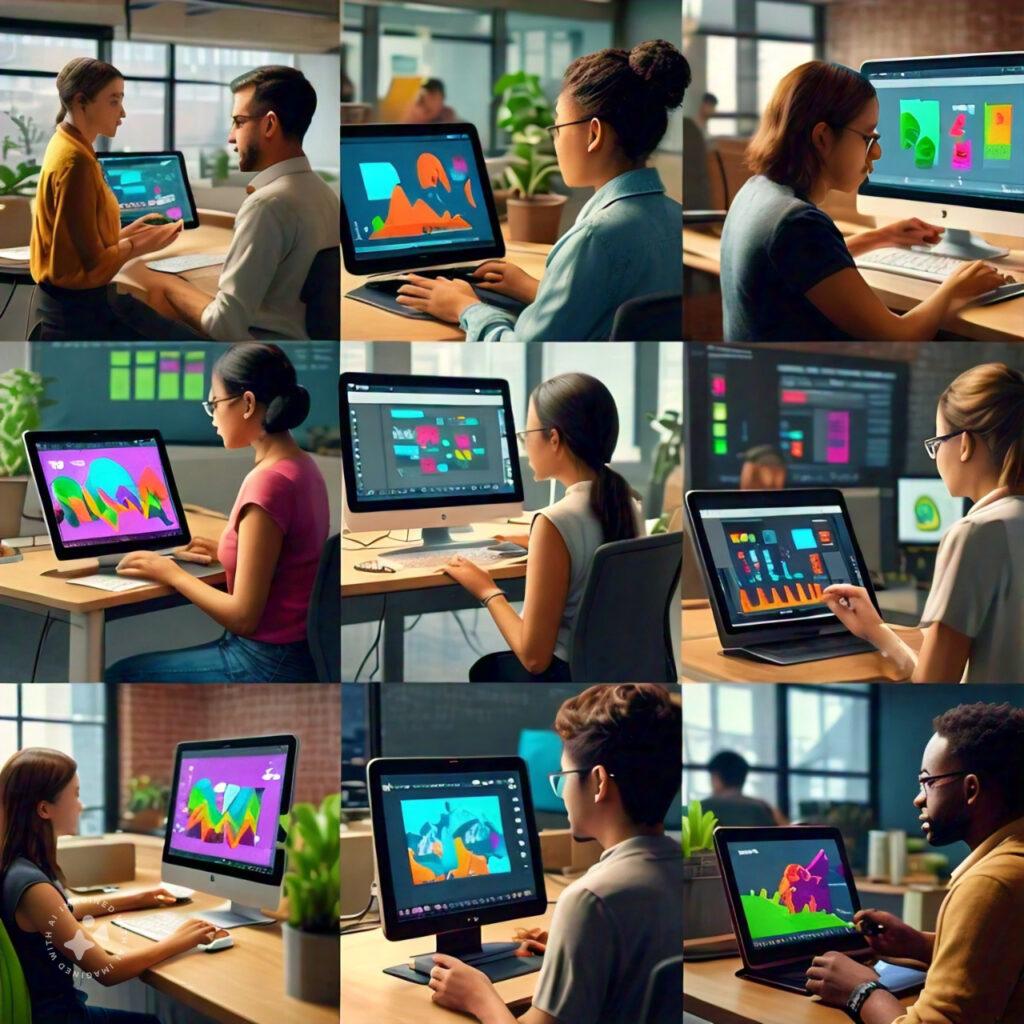 Caption: A close-up shot of a diverse group of hands using AI video creation tools on their devices.
Caption: A close-up shot of a diverse group of hands using AI video creation tools on their devices.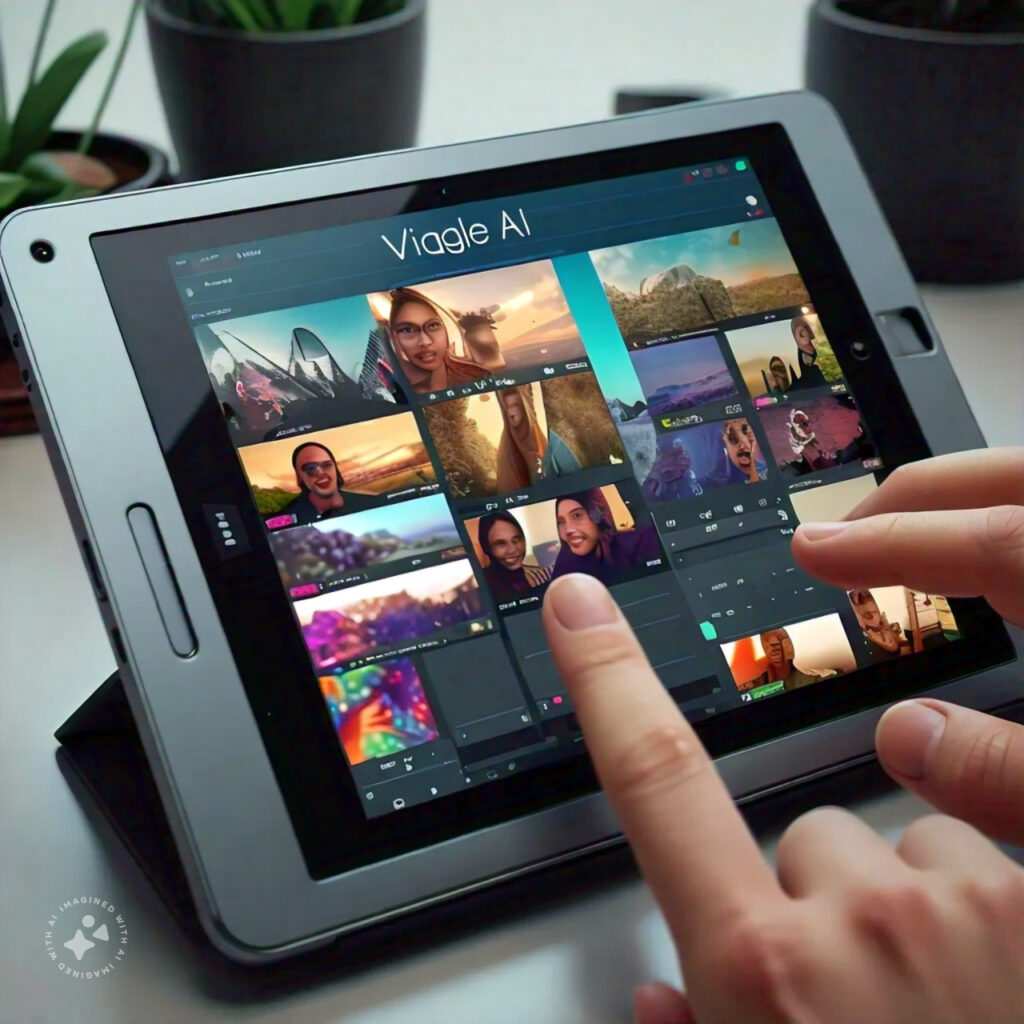 Caption: A close-up view of a user's hands working on a video project with Viggle AI on a tablet.
Caption: A close-up view of a user's hands working on a video project with Viggle AI on a tablet.  Caption: An AI-generated video adjusts in real-time based on viewer preferences.
Caption: An AI-generated video adjusts in real-time based on viewer preferences. Caption: A photorealistic image depicting a split-screen comparison between traditional video production and AI-powered video production.
Caption: A photorealistic image depicting a split-screen comparison between traditional video production and AI-powered video production.
 Caption: Diverse professionals collaborate using generative AI, sparking new ideas and creativity.
Caption: Diverse professionals collaborate using generative AI, sparking new ideas and creativity. Caption: Generative AI transforms content creation, turning frustration into satisfaction.
Caption: Generative AI transforms content creation, turning frustration into satisfaction.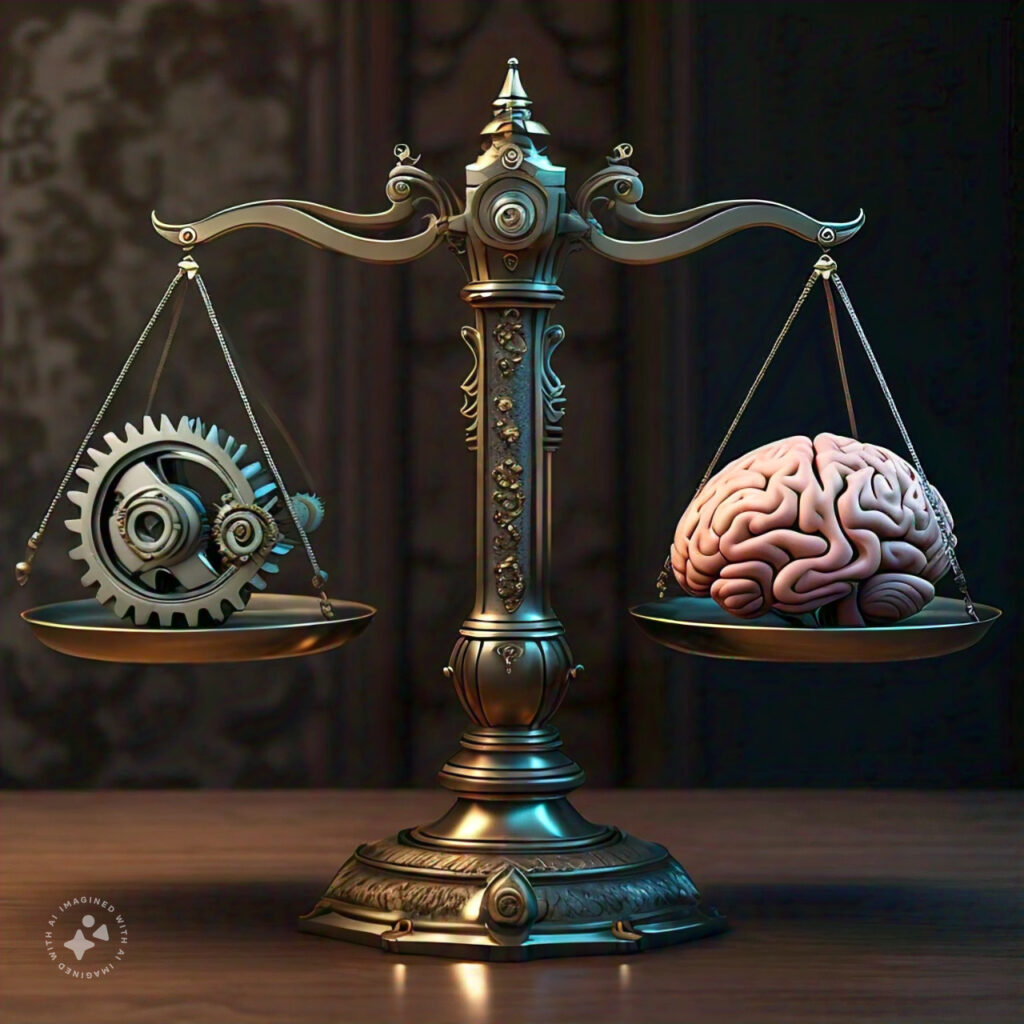 Caption: Generative AI achieves balance with human intelligence.
Caption: Generative AI achieves balance with human intelligence.